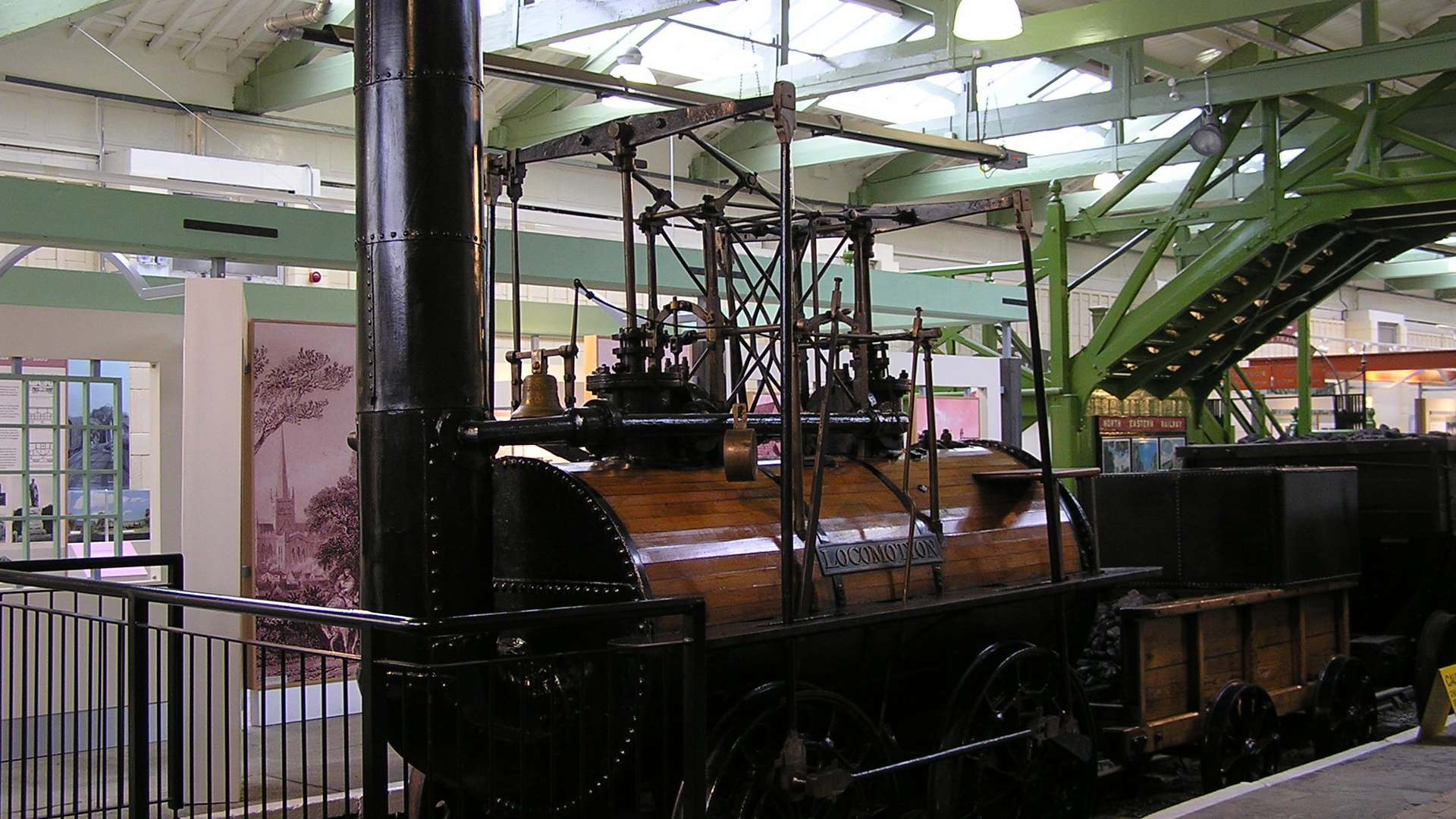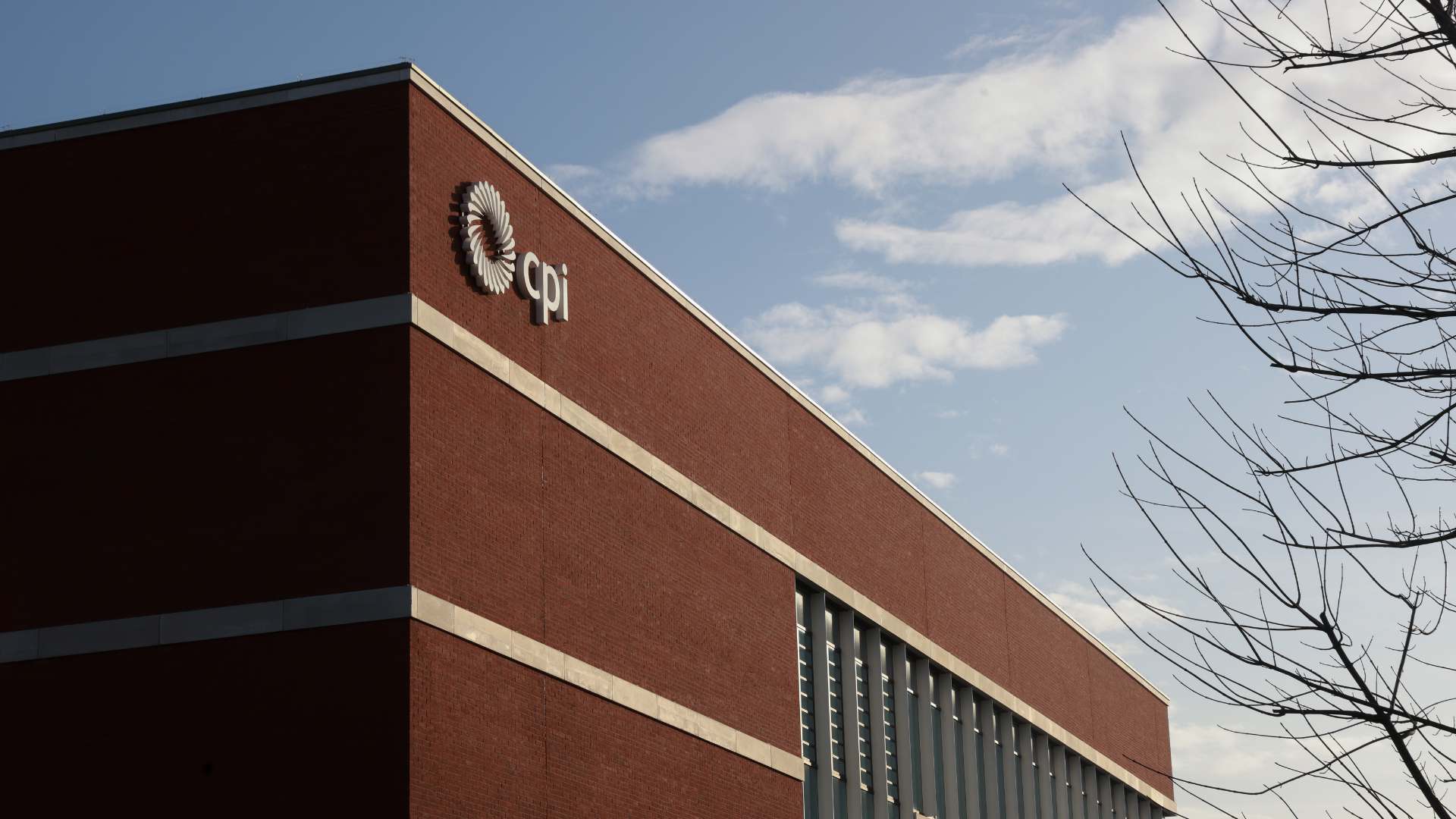From trains to strains: A two-century journey of innovation in Darlington
2025 marks 200 years of rail and 10 years of CPI’s National Biologics Manufacturing Centre in Darlington, from steam locomotives to RNA medicines.

Corporate Communications Manager
(she/her)

As Darlington celebrates 200 years of the Stockton & Darlington Railway and 10 years of CPI’s National Biologics Manufacturing Centre, we chart the town’s journey from steam locomotives to RNA breakthroughs – showing how the same industrial spirit that built the world’s first public railway now powers the acceleration of next-generation medicines.
All aboard the first train
On 27 September 1825, crowds lined the fields around Darlington’s Skerne Bridge. Locomotion No. 1, a black-painted steam locomotive designed by George Stephenson, hissed and groaned as it prepared to haul an assortment of wagons down the Stockton & Darlington Railway (S&DR).
Among the wagons was Experiment, a passenger coach brimming with both dignitaries and ordinary folk taking their first-ever ride on a steam train. Stephenson opened the throttle, and the locomotive thundered forward, carrying coal, flour, and tens of thousands of spectators’ hopes and dreams, along the 26-mile line. Britain had just witnessed the birth of the modern railway.

The idea that changed the world
The birth of the S&DR was grounded in real industrial need. In the early 1800s, coal was the lifeblood of Britain’s factories and homes, yet inadequate roads made moving it expensive. Edward Pease, a Darlington wool merchant and Quaker, convened fellow industrialists to discuss alternatives. After commissioning engineer George Overton to survey a route, Pease persuaded investors that a public railway – rather than a canal – was the future.
On opening day, the S&DR proved more than a curiosity. The train climbed embankments, crossed Skerne Bridge (still in use two centuries later), and reached Stockton in just over 3 hours. Periculum privatum utilitas publica, “the private danger is the public good,” fluttered on a flag at the front, heralding a new era of mobility and commerce.
Within 5 years, branch lines had been built to Yarm, Croft and Middlesbrough. By 1830, the S&DR had formed a blueprint for railways across Britain and beyond.
A town transformed
The railway’s impact on Darlington and its surroundings was profound. Darlington’s linen industry and strategic position on the Great North Road had already brought wealth to families like the Peases. Yet it was the railway that supercharged growth: the town’s population quickly grew from around 7,500 in 1825, as wool and linen manufacturing boomed.
Goods sheds, engineering workshops, inns and houses sprouted beside the tracks, while locals and migrants alike found employment as engine drivers, smiths, clerks and carriage builders.
Although some had argued for a canal or opposed the railway altogether, the S&DR’s success silenced doubters. Its profits and reliability convinced investors that iron rails and steam engines were the future of transport. By 1863, the line had expanded across the North of England and merged into the North Eastern Railway. The once-controversial venture had ushered in the age of connecting communities, markets and ideas across the globe.
Building a “factory of the future”
In 2014, construction began on our National Biologics Manufacturing Centre in Darlington’s Central Park. Backed by a £38 million investment from the UK Government’s Strategy for Life Sciences, the centre opened in September 2015, offering state-of-the-art facilities and training to help companies develop, test and scale up biologic products and processes.
Our mission mirrors the S&DR’s ethos of serving the broader community. We act as a neutral space where academics, SMEs and multinationals collaborate to de-risk innovation and accelerate ideas from bench to market. The centre’s position across the road from Darlington train station creates both a symbolic and practical link between the town’s railway past and modern industrial future.

Celebrating 10 years of impact
September 2025 marks 10 years since the centre opened. In that decade, we have supported numerous projects, helped smaller firms access equipment they could never afford alone, and trained a new generation of scientists. CPI has become a cornerstone of the Tees Valley life sciences cluster, attracting investment and creating high-skill jobs.
The anniversary coincides with the bicentenary of the S&DR, underscoring how Darlington’s spirit of innovation continues to evolve.
That spirit is alive today in CPI. We saw the potential of RNA technology early and began building RNA capabilities within our biologics centre. This meant we were ready to support the UK Government’s Vaccine Taskforce during the COVID-19 pandemic.
In 2023, we opened a £26.4 million RNA Centre of Excellence alongside our biologics centre in Darlington to scale up next-generation RNA vaccines and therapies.
In 2025, 10 years on from CPI first opening its doors in Darlington, UK Government selected CPI to host its £29.6 million UK RNA Biofoundry – an agile, GMP facility that helps take RNA therapies from lab to clinical trial, while bolstering the UK’s pandemic preparedness. Just days later, we announced a joint venture with Quotient Sciences to cut mRNA development timelines to as little as 2 months.
Much like the S&DR revolutionised transport, these initiatives are reshaping how modern medicines reach patients, cementing Darlington’s role in the UK’s next wave of innovation. And just as the first railway line became a model for networks around the world, our work in RNA is setting the pace for national and global capability.
Parallels of progress: what 1825 and 2025 share
While the railway and RNA may seem worlds apart, surprising parallels emerge between the innovations of 1825 and those of today:
- Innovation driven by necessity
The S&DR solved the urgent problem of coal transport. CPI addresses industry’s need for biologics and RNA manufacturing support, helping to retain innovation in the UK and drive economic growth. - Visionary leadership
Edward Pease and his colleagues overcame political and technical obstacles to build the world’s first public railway. Today, CPI, alongside partners in government, academia and industry, builds the infrastructure and capability needed to keep the UK at the forefront of life sciences. - Demonstration through action
The S&DR’s inaugural journey proved that steam locomotion was viable. CPI’s open-access facilities demonstrate that complex biologics and RNA therapies can be developed and manufactured domestically at scale. - Catalysts for transformation
The railways transformed Darlington from rural town to industrial hub. CPI plays a similar role today, creating and retaining high-value jobs, attracting investment and anchoring innovation ecosystems across the Tees Valley. - Global influence
Stephenson’s track gauge became the global standard. CPI’s facilities and partnerships are now helping to shape international best practice for biologics and RNA manufacturing. - Experiment as a symbol of progress
On that first railway journey, one coach stood out: Experiment. It carried passengers into a new age of possibility – a fitting name for a vehicle at the frontier of innovation. At CPI, we see experimentation not as risk, but as momentum. Our labs are where ideas take their first ride, supported, scaled and steered toward real-world use. Just as Experiment opened the door to mass rail travel, our work today unlocks the next generation of medicines.
Looking ahead: celebrating two anniversaries
As Darlington prepares to celebrate 200 years since the founding of the S&DR and 10 years of CPI’s biologics centre, the town is embracing its dual heritage. The juxtaposition of steam engines and laboratories, coal and genomes, iron rails and lipid nanoparticles, reminds us of a simple truth: innovation is not a one-off event, but a continuous journey.
Darlington’s story reminds us that the same creative spirit that sparked the railway revolution continues to power today’s breakthroughs. Whether you’re boarding a heritage locomotive at Skerne Bridge or donning a lab coat at CPI, you’re part of a journey that spans centuries – a journey fuelled by curiosity, collaboration and the drive to build a better future.
Just as the railway connected communities, industries and ideas in ways that reshaped the world, CPI is doing the same today, forging the critical links that turn potential into progress.
Learn more how we can boost your innovation journey
Pharma innovation supportEnjoyed this article? Keep reading more expert insights...
CPI ensures that great inventions gets the best opportunity to become a successfully marketed product or process. We provide industry-relevant expertise and assets, supporting proof of concept and scale up services for the development of your innovative products and processes.
